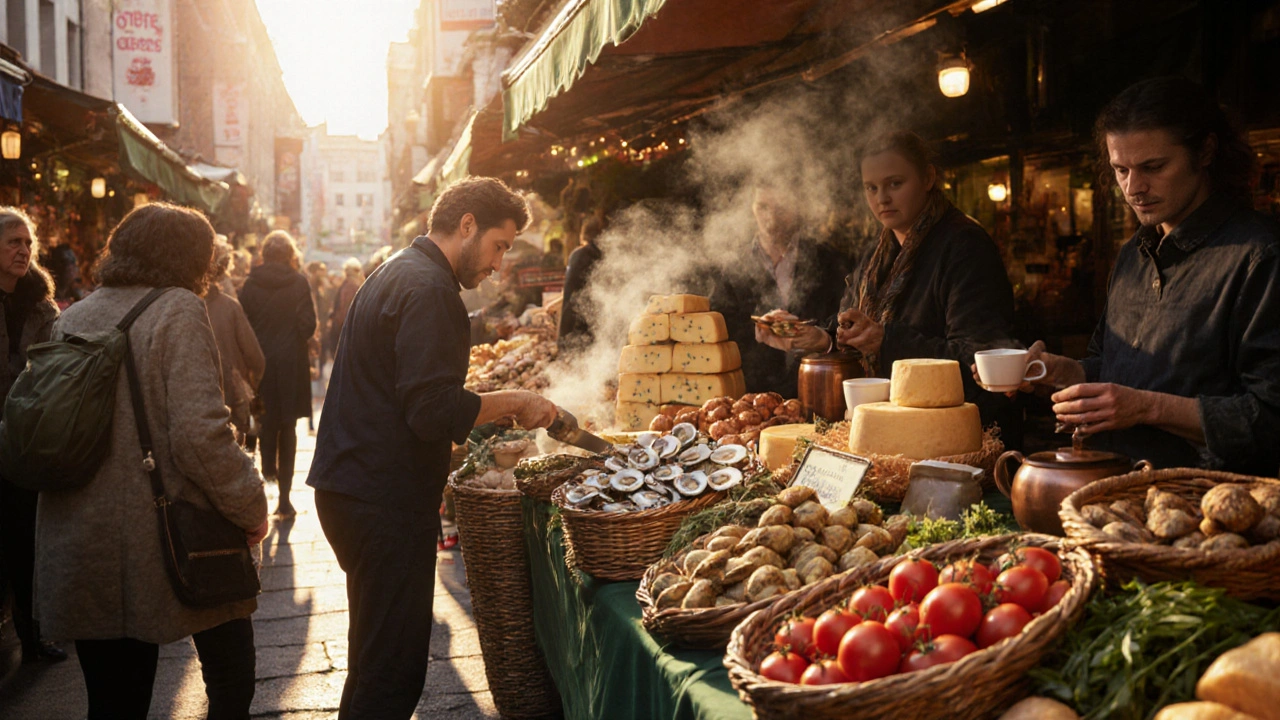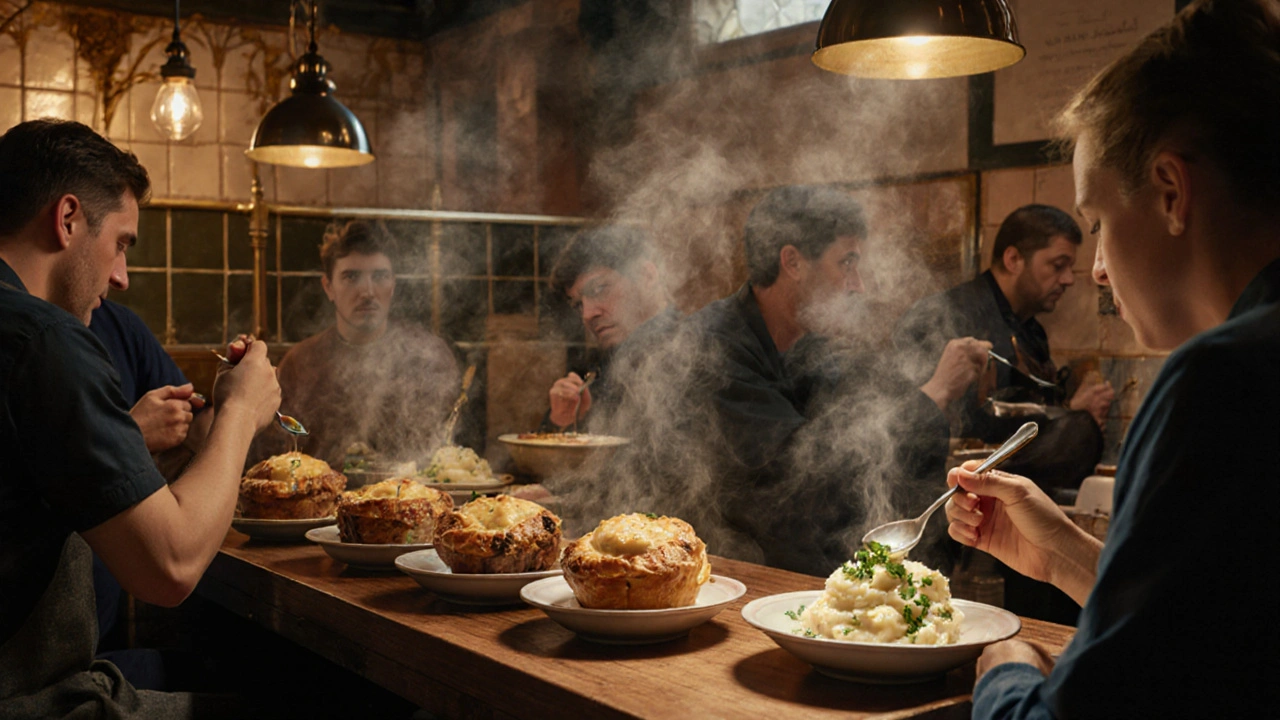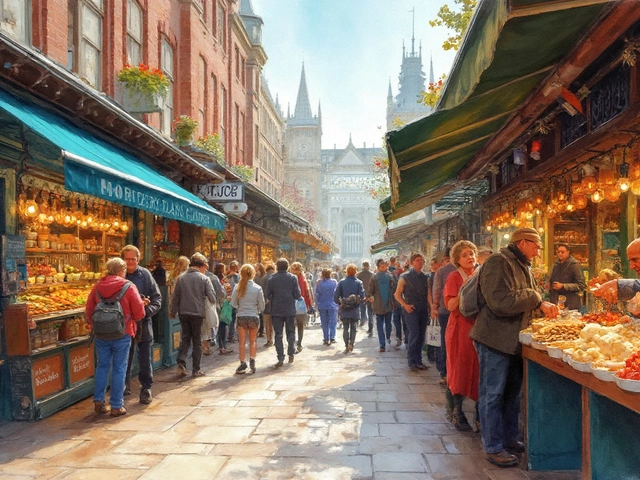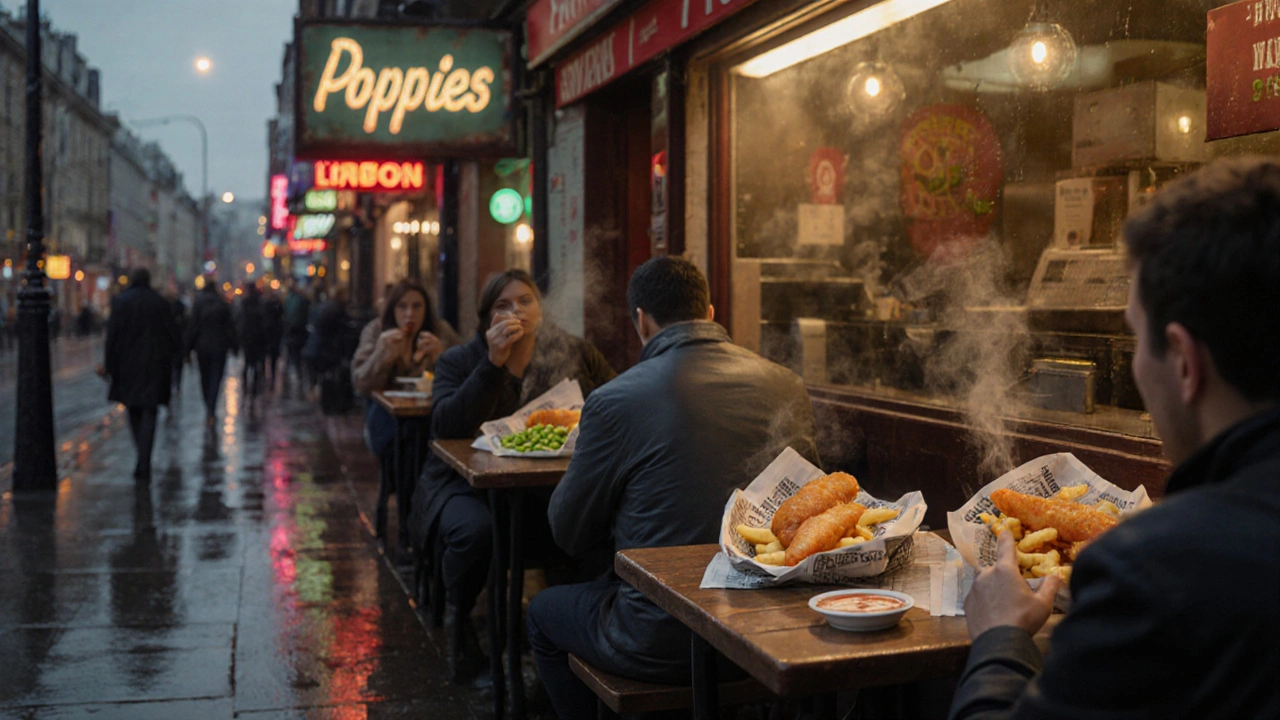
You’ve walked past the red buses, stared up at Big Ben, and maybe even braved the Tube during rush hour. But have you eaten like a Londoner? The city’s food scene isn’t just about fancy Michelin stars-it’s about greasy spoons, steamy curry houses, and pies that have been handed down for generations. If you’re looking for the real taste of London, skip the tourist traps and head straight for the dishes that locals still line up for.
What Makes London’s Food Unique?
London doesn’t have one single dish that defines it. Instead, it’s a patchwork of cultures, histories, and working-class traditions. You’ll find fish and chips wrapped in newspaper next to a Bengali curry house that’s been open since 1972. You’ll see a Jamaican jerk stall next to a Polish deli selling pierogi. That’s the magic of London: it’s not about pretending to be something it’s not. It’s about layers-centuries of immigration, war, trade, and survival-all cooked into one plate.
Forget the idea that British food is bland. That myth died in the 1980s when immigrants from South Asia, the Caribbean, and Eastern Europe brought their kitchens with them. Today, London has more curry houses than Mumbai. It has the best pie and mash in the UK. And yes, it still serves a Sunday roast that’ll make you question every other version you’ve ever had.
The 7 Famous Foods in London You Can’t Skip
Here’s the shortlist-the seven dishes that define London’s food soul. Try even one, and you’ll understand why locals won’t let you leave without tasting them.
1. Fish and Chips
It’s not just food. It’s a ritual. You walk into a chippy, smell the vinegar and hot oil, and know you’re in the right place. The fish should be cod or haddock, coated in a light, crisp batter that shatters when you bite into it. The chips? Thick-cut, fluffy inside, golden outside. No one uses frozen fries here. The best places fry in beef dripping for that rich, old-school flavor.
Head to Poppies in Clapham or The Golden Hind in Southwark. Both have been around since the 1950s. Order it with mushy peas and a side of tartar sauce. Eat it with your hands. Don’t use a fork.
2. Pie and Mash
This is London’s original comfort food. Think of it as the working-class answer to beef Wellington. A flaky, buttery pie filled with minced beef and gravy, served with mashed potatoes and a spoonful of parsley liquor-a green, herby sauce made from boiled parsley and water. Sounds strange? Try it once. You’ll get hooked.
M. Manze in Peckham has been serving this since 1902. They still use the same copper pots. The pies are baked fresh daily. The parsley liquor? Made from scratch. No shortcuts. Eat it with a splash of pickled red cabbage on the side. It cuts through the richness perfectly.
3. Sunday Roast
Every Sunday, London turns into a giant kitchen. Families gather. Pubs fill up. And everyone waits for the same thing: roast beef, crispy crackling, Yorkshire pudding, roasted potatoes, carrots, and gravy that soaks into everything.
The secret? Slow-roasting the meat for hours. Not just any beef-brisket or rump, with a thick layer of fat. The Yorkshire pudding? Made with eggs, flour, and milk, then baked in hot beef drippings until it puffs up like a cloud. The best ones come from pubs like The Harp in Covent Garden or The Crown in Brixton. Don’t skip the horseradish sauce. It’s the punch you didn’t know you needed.
4. Chicken Tikka Masala
Yes, it’s technically British. No one agrees where it was invented, but everyone agrees it’s the most popular dish in the UK. Creamy, spiced tomato sauce, tender chicken, served with basmati rice and naan. It’s not Indian. It’s not Pakistani. It’s London.
Try it at Shah Jahan in Brick Lane. Their version has just the right balance of heat and sweetness. The sauce clings to the chicken without being gloopy. The naan is still warm when it hits the table. This isn’t just dinner-it’s a cultural milestone.
5. Cockles and Mussels
These are the tiny, briny shellfish that once fed dockworkers in East London. You’ll find them steamed in vinegar and pepper, served in paper cups at street stalls. They’re salty, chewy, and weirdly addictive. Most tourists skip them. Locals eat them like candy.
Look for stalls near Leadenhall Market or Borough Market. Order a small portion. Dip them in malt vinegar. Eat them fast. They’re best when still warm.
6. Full English Breakfast
This isn’t a meal. It’s a declaration. Two eggs (fried or scrambled), bacon, sausages, baked beans, grilled tomatoes, mushrooms, toast, and black pudding-a blood sausage that tastes like iron and herbs. It’s heavy. It’s messy. It’s glorious.
The best place to try it? The Breakfast Club in Soho. Their black pudding is made in-house. The beans are slow-cooked with smoked paprika. The toast? Buttered, not toasted too hard. Eat it slowly. Don’t rush. This is breakfast, not a race.
7. Sticky Toffee Pudding
End your food journey here. This dessert is like a warm hug. A moist sponge cake made with dates, smothered in a thick caramel sauce, served with vanilla custard or clotted cream. It’s sweet, but not cloying. Rich, but not overwhelming.
The Ivy in Covent Garden does it right. So does The Wolseley in Piccadilly. But if you want the real deal, go to a pub in Kentish Town. The best ones bake it fresh daily. The sauce is poured over it tableside. You’ll want seconds.
Where to Eat: Neighborhoods That Know Their Food
London’s food isn’t just in restaurants. It’s in neighborhoods that have claimed their own flavors.
- Brick Lane-The curry capital. Try the chicken tikka masala, jhal muri (spicy puffed rice snack), and nihari (slow-cooked beef stew).
- Borough Market-A foodie paradise. Sample artisan cheese, fresh oysters, sourdough bread, and global street food from one stall to the next.
- Camden-Vegan pies, Korean tacos, and deep-fried Oreos. This is where London’s youth eat after a night out.
- Willesden-West African food. Try jollof rice, egusi soup, and suya (spiced grilled meat).
- Chinatown-Dim sum at 10 a.m. Steamed buns, char siu pork, and sesame balls that melt in your mouth.
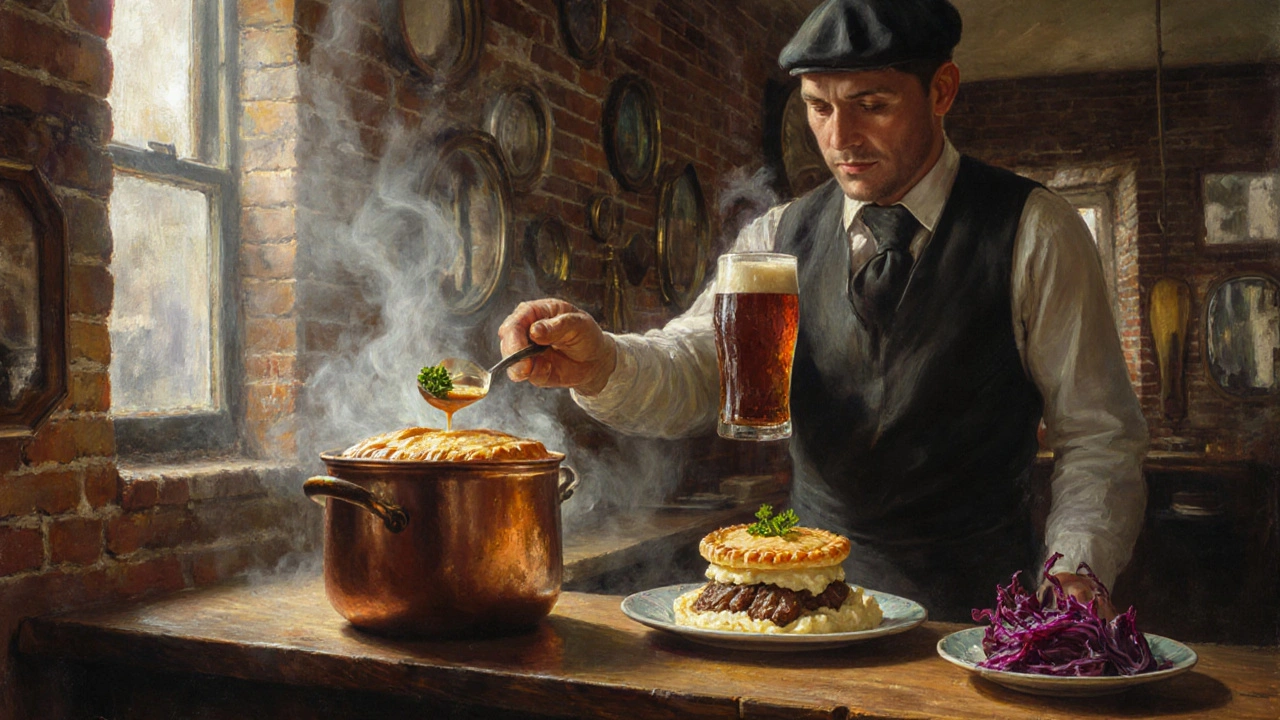
How to Eat Like a Local
Here’s the unspoken rule: don’t ask for ketchup with your fish and chips. Don’t order a latte in a traditional pie shop. Don’t expect a salad with your Sunday roast.
Locals know the rules. You’ll fit in faster if you do too.
- Order “a pint of bitter” with your pie and mash. Not beer. Not lager. Bitter.
- Ask for “extra gravy” on your roast. No one says no.
- Try “pickled beetroot” with your sausage. It’s weird. It’s brilliant.
- Don’t tip at chippies or pie shops. It’s not expected.
- Go early. The best food sells out. By 2 p.m., the last of the Yorkshire puddings are gone.
What to Avoid
Not every place with a Union Jack flag serves good food. Avoid:
- Restaurants near tourist attractions that have menus in five languages and photos of every dish.
- “British food” places that serve “shepherd’s pie” with mashed sweet potatoes. That’s not traditional.
- Chain fish and chip shops that use frozen batter. The crust won’t crack. It’ll just slide off.
If it looks like a photo shoot and smells like a tourist trap, walk away.
When to Eat
Timing matters.
- Friday night? Hit the curry houses. They’re packed. The best ones serve extra spicy curries on weekends.
- Sunday lunch? Book ahead. Most pubs take reservations now.
- Monday to Wednesday? Go to Borough Market. It’s quieter. The vendors are more relaxed. You’ll get better service.
- After midnight? Camden’s food stalls are open until 3 a.m. Try the loaded fries with cheese and jalapeños. You’ll thank yourself.
Price Range: What You’ll Pay
London food doesn’t have to break the bank.
| Dish | Price Range | Where to Get the Best Value |
|---|---|---|
| Fish and Chips | £12-£18 | Local chippies (not tourist spots) |
| Pie and Mash | £8-£12 | M. Manze, Peckham |
| Sunday Roast | £15-£22 | Pub specials (often includes drink) |
| Chicken Tikka Masala | £10-£16 | Brick Lane family-run spots |
| Full English Breakfast | £10-£18 | Independent cafés, not chains |
| Sticky Toffee Pudding | £6-£9 | Pubs and bakeries |
That’s less than the price of a coffee at Starbucks for a full, soul-satisfying meal.
Frequently Asked Questions
What’s the most famous food in London?
Fish and chips is the most iconic, but chicken tikka masala is the most eaten. If you’re asking what defines London’s soul, it’s pie and mash-it’s the only dish that’s been served in the same way for over 100 years, right in the heart of East London.
Is London food healthy?
Some of it isn’t. But that’s not the point. London food is about tradition, comfort, and community. If you want healthy, try Borough Market’s fresh salads or the vegan options in Camden. But if you’re here to taste history, go for the crackling, the gravy, the parsley liquor. Eat it once. You’ll remember it.
Can I get vegetarian or vegan versions of these dishes?
Absolutely. Many chippies now offer vegan fish made from jackfruit or seaweed. Pie and mash places serve mushroom and lentil pies. Even Sunday roasts have plant-based roasts with gravy made from mushrooms. Camden and Brixton lead the way-ask for the vegan menu. You won’t miss the meat.
What’s the best time to visit Borough Market?
Tuesday to Thursday, 10 a.m. to 3 p.m. That’s when the stalls are full, the crowds are smaller, and the vendors have time to talk to you. Weekends are packed. Go early if you want the best cheese or fresh sourdough.
Do I need to book ahead for Sunday roast?
Yes. Even the small pubs take reservations now. Call at least 24 hours ahead. If you show up without one, you’ll likely wait an hour-or miss out entirely. The roast runs out by 3 p.m.
Final Tip: Eat Slowly, Talk to People
The best part of London’s food isn’t the taste. It’s the stories. Ask the person behind the counter how long they’ve been making pie and mash. Ask the vendor at Borough Market where they get their herbs. You’ll hear about grandparents, migration, wars, and pride. That’s what makes this food unforgettable. You’re not just eating a meal. You’re tasting a city’s history-layer by layer, bite by bite.


